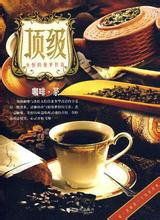Flavor description of Sidamo Coffee introduction to the taste of grinding scale variety production area treatment method
Flavor description of Sidamo Coffee introduction to the taste of grinding scale variety production area treatment method
Sidamo's classification standard is according to the defect rate, the less the number of defective beans in the same weight standard, the better the quality, the higher the grade! Generally divided into two and three levels (G2, G3), water-washed Sidamo because the treatment process is more perfect than the sun, so most of the G2 level exports are more. Most of the sun-processed coffee is grade 3 or grade 4 or grade 5 (G3, G4, G5). In many cases, level four coffee will be marked as level five, but that is to reduce taxes. The current classification is not very uniform and a bit messy, but whatever you see marked G1, it must be the highest level of Sidamo, whether it's washing or tanning.
Water-washed coffee flavor is not easy to have wild flavor, with pure, refreshing characteristics, suitable for City to Full City baking degree; some essential excellent Ethiopian water-washed coffee beans, sometimes can be detected obvious rising lemon, citrus essential oil, jasmine, honey and so on, the sour taste is obvious, mellow and thin. All kinds of mocha beans treated in the sun have wild flavor in the basic flavor, but the degree is more or less different, so it is more suitable for the baking degree from Full City to Vienna. The essence of the excellent sun, mocha beans, its tail will have a distinct taste of chocolate, and some coffee trees with more pleasing blueberry-like fermented fruit and red wine texture were planted by monks in Europe (a bit like Belgian monks growing wheat to brew beer) and later transferred to farmers or cooperatives. Yejia Chuefei is actually constructed by surrounding coffee communities or cooperatives, including Edido Idido, Hafusa Harfusa, Hama Hama and Biloya near Fog Valley Misty valley, all washed with water, but there are also a small number of off-product beans engraved with sun to enhance the charming fruit aroma and mellow thickness. These mountain villages are foggy, like spring all year round, with a gentle breeze in summer, cool but not hot, rain but not damp, and no cold damage in winter, giving birth to a unique regional flavor of citrus and flowers. Coffee trees are mostly planted in farmers' own backyard or mixed with other crops in the field, the yield per household is not much, it is a typical rural coffee. Yega Xuefei won the prize beans almost from the above-mentioned coffee villages and communities.

Important Notice :
前街咖啡 FrontStreet Coffee has moved to new addredd:
FrontStreet Coffee Address: 315,Donghua East Road,GuangZhou
Tel:020 38364473
- Prev

How should the crema of espresso be normal?-how to drink illy espresso powder
How should the crema of espresso be normal-how does illy espresso powder drink? 1, whether the coffee is fresh: a large number of Robosta beans allow us to see a lot of foam, so we can't judge the freshness of coffee by watching the speed at which the foam disappears. Fresh coffee will appear to be very crema throughout the production process (that is, when the coffee comes out, it looks like Coke.
- Next

Does the size of coffee powder affect the concentration of espresso?
Does the size of coffee powder affect the concentration of espresso? the best time to grind coffee is to grind it before cooking. Because ground coffee is easy to oxidize and lose its flavor, especially without proper storage, coffee powder is also easy to change flavor, so it is naturally impossible to cook mellow coffee. The grinding prop for coffee beans is a grinder. The mill is used at home.
Related
- What brand of black coffee is the most authentic and delicious? what are the characteristics of the flavor of the authentic Rose Summer Black Coffee?
- Introduction to the principle and characteristics of the correct use of mocha pot A detailed course of mocha pot brewing coffee is described in five steps.
- Which is better, decaf or regular coffee? how is decaf made?
- How much is a bag of four cat coffee?
- How about four Cat Coffee or Nestle Coffee? why is it a cheap scam?
- Which is better, Yunnan four Cats Coffee or Nestle Coffee? How about cat coffee? is it a fake scam? why is it so cheap?
- How about Cat Coffee? what grade is a hoax? which instant coffee tastes better, four Cat Coffee, Nestle Coffee or G7 coffee?
- Process flow chart of coffee making-Starbucks coffee making process what coffee tastes good at Starbucks
- The top ten best coffee beans in the world Rose summer coffee or Tanzanian coffee tastes good
- Yunnan four cat coffee is good to drink?_four cat coffee is a big brand? four cat blue mountain coffee is fake?

